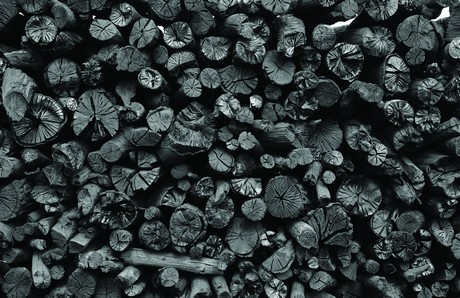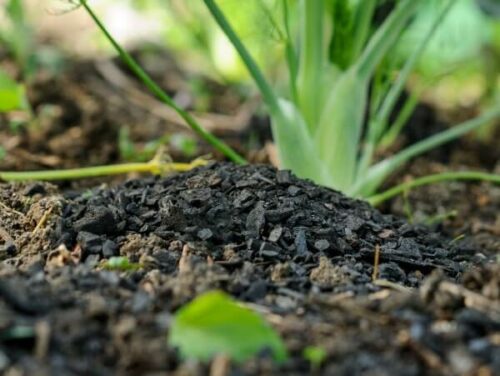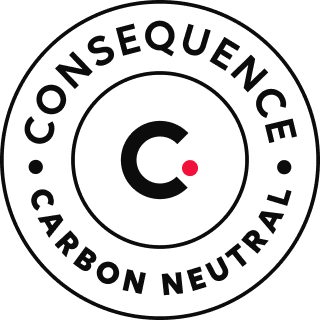What is carbon sequestration?

What is carbon sequestration and why is it important?
Carbon sequestration, is the process of naturally or artificially capturing and storing carbon dioxide emissions. These emissions come primarily from burning fossil fuels, such as coal and oil, for energy use. However, when too much carbon dioxide is released into the atmosphere, it can lead to climate change and global warming. This is where carbon sequestration comes in. By capturing these emissions and storing them underground or in plants and oceans, we can reduce the amount of carbon dioxide in the atmosphere and mitigate some of the negative effects of climate change. It is a crucial tool in combatting global warming and creating a more sustainable future.
How does sequestering carbon work and what are the benefits of doing it on a large scale?
One way to sequester carbon on a large scale is through the use of biochar. Biochar is a type of charcoal produced from organic materials such as wood, agricultural waste, and even manure. When biochar is added to soil, it not only enhances plant growth and increases crop yields, but it also helps to trap atmospheric carbon in the ground. This process of storing carbon in soil is known as “terrestrial sequestration.” In addition to reducing greenhouse gas emissions, biochar can also improve soil fertility and water retention, improve fertilizer efficiency, and reduce nutrient runoff. While biochar has been used for centuries by indigenous cultures, modern technologies are now making it possible to produce biochar on a larger scale, offering a potential solution for fighting climate change while also improving sustainable agriculture practices.
What challenges does carbon sequestration present and how can they be overcome?
Carbon sequestration, or the capture and storage of carbon emissions, has been touted as a potential solution to mitigate climate change. However, there are significant challenges that must be overcome before it can become a widespread approach. One major issue is cost – the technology required to capture and store carbon is expensive and not yet widely available. In addition, the long-term effectiveness of storing carbon in underground wells or other repositories is uncertain. It is also necessary to consider potential safety and environmental impacts, such as leaking carbon or disrupting geological structures. Despite these challenges, researchers and scientists are working towards finding solutions, such as developing more affordable technology and a better understanding of how much carbon can safely be stored. By addressing these obstacles, carbon sequestration could hopefully play a significant role in reducing global carbon emissions.
What are some of the potential negative consequences of implementing large-scale sequestration projects?
Carbon sequestration, is the process of capturing carbon dioxide emissions and storing them underground, has recently gained attention as a potential solution to combat climate change.
While it may seem like an effective way to reduce atmospheric CO2 levels, there are a variety of concerns surrounding its implementation on a large scale. One main concern is the possibility of leakage, where stored carbon can escape back into the atmosphere. This could defeat the purpose of sequestering it in the first place and potentially have detrimental effects on local ecosystems. Another issue is that carbon sequestration technologies are often expensive and energy-intensive, meaning they may not be financially or logistically feasible for widespread use. Additionally, some worry that the focus on carbon sequestration could divert attention and resources away from more sustainable solutions, such as renewable energy sources. Overall, while carbon sequestration has the potential as a tool in our fight against climate change, careful consideration must be given to its possible negative consequences before implementing it on a large scale.
Are there any other ways to reduce our greenhouse gas emissions that we should consider?
In addition to reducing our energy consumption and switching to renewable sources, another way to reduce greenhouse gas emissions is through the use of biochar. This substance is made from organic materials, such as wood or agricultural waste, that have been burned in a controlled environment with minimal oxygen. The resulting biochar can be used as a soil amendment, improving the soil’s fertility and ability to retain water and nutrients. But more importantly, biochar can permanently store carbon in the soil for hundreds or even thousands of years. Considering agriculture accounts for roughly 10% of global greenhouse gas emissions, incorporating biochar into farming practices could have a significant impact on reducing emissions. While it may seem like a small change, expanding the use of biochar is an environmentally friendly solution worth considering in our efforts to combat climate change.
What do you think about using carbon sequestration as a way to combat climate change?
Carbon sequestration is the process of capturing and storing carbon to reduce their impact on the atmosphere and reducing pollution. While it has been proposed as a possible solution to combat climate change, it is important to understand the limitations and potential downsides of this method. Firstly, it is only effective for certain industries such as power plants that emit large amounts of carbon. Secondly, there are concerns about the long-term storage and safety of carbon emissions. And finally, there is also the issue of potential cost – implementing carbon sequestration technology can be expensive, and raises questions about who should bear the burden of these costs. Despite these challenges, some argue that carbon sequestration is a necessary step in reducing global carbon emissions and slowing down climate change. Ultimately, more research and discussion are needed before deciding on the effectiveness and feasibility of using this approach.
In conclusion, carbon sequestration is a process that can help to mitigate the effects of climate change by removing greenhouse gases from the atmosphere. It works by trapping carbon dioxide underground or underwater where it cannot contribute to global warming. There are many potential benefits of implementing large-scale carbon sequestration projects, such as reducing our reliance on fossil fuels and slowing the rate of climate change. However, there are also some potential risks associated with these projects, which need to be taken into consideration before they are implemented. There are other ways to reduce our greenhouse gas emissions that we should consider before embarking on any large-scale carbon sequestration projects. Carbon Gold biochar can be purchased through our shop or by contacting us if you would like to learn more about our environmentally friendly biochar and how it could help address climate change.
Stay in the know
Subscribe to the mailing list to keep up with new products & industry developments. Don't worry... we don't like spam either.
Author
Carbon Gold
Biochar

Article Tags
BiocharCarbon NeutralShare This Article
Related articles

Brimstones, Buckthorn and Bluebells
Category: FAQs, Gardening Tips, Guides
Butterflies in February?! It was only a couple of weeks ago that the country was hunkering down beneath an onslaught…
Read MoreCarbon Gold
Biochar


Houseplants in the Bedroom
Category: FAQs, Garden and Home, Guides
We all know that houseplants have a huge positive impact on health and wellbeing – both physically and mentally. They…
Read MoreCarbon Gold
Biochar


The Urban Gardener's Enchanted Chronicle: The Marvel of Balcony Gardening
Category: Gardening Tips, Growing Guides
Picture this: with a simple flick of your green thumb, your urban space metamorphoses into an enchanting garden. This vision…
Read MoreCarbon Gold
Biochar







